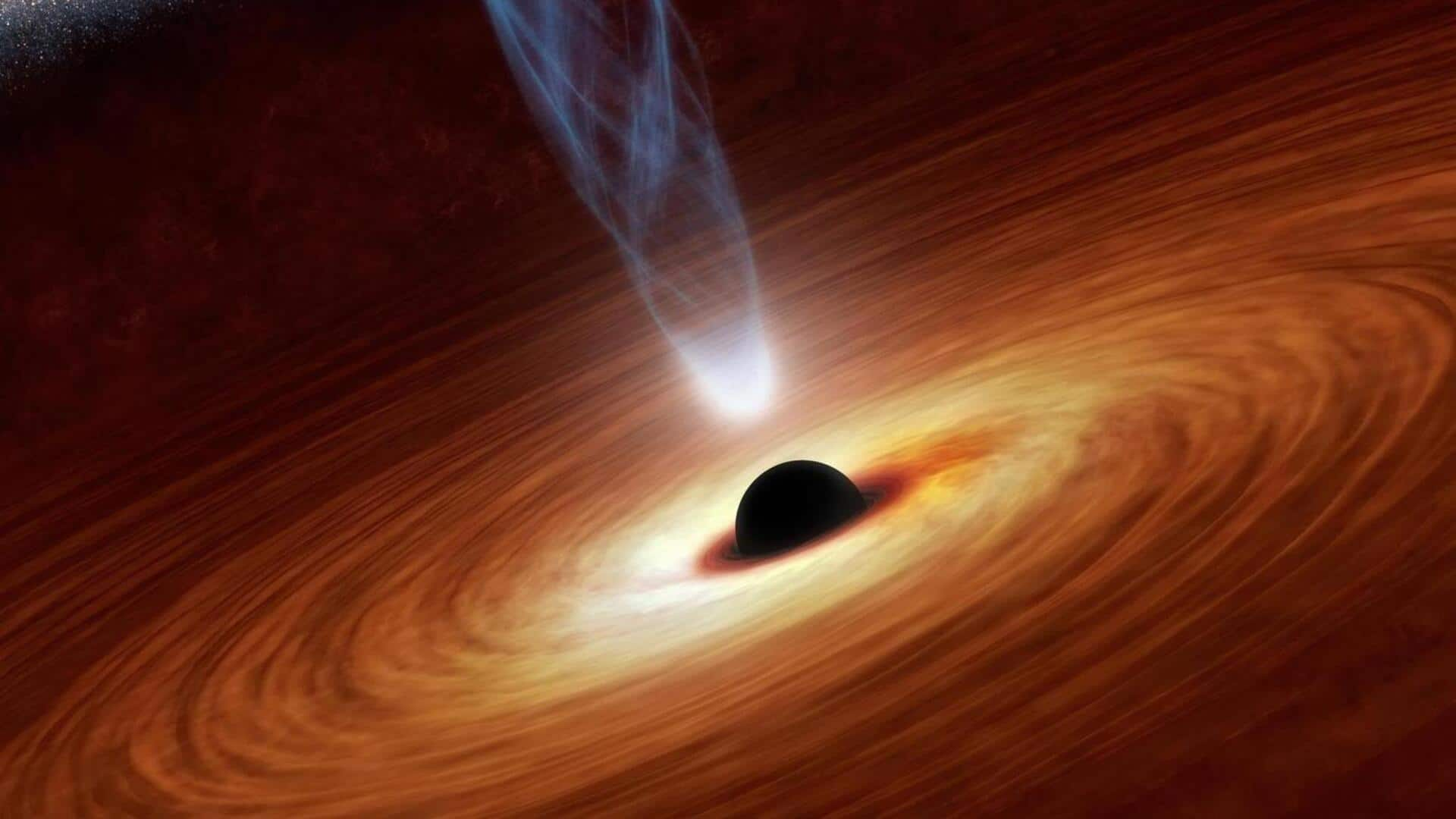
This black hole is 36B times heavier than our Sun!
What's the story
Astronomers have discovered a supermassive black hole weighing an astonishing 36 billion solar masses. The cosmic giant is located in the Cosmic Horseshoe system, which includes one of the largest galaxies ever observed. The discovery brings us closer to understanding the relationship between supermassive black holes and their host galaxies.
Galactic giant
The Cosmic Horseshoe system
The Cosmic Horseshoe is not just any system; it includes a massive galaxy that distorts spacetime and bends the light of a background galaxy into an Einstein ring. This unique property makes it a prime location for studying ultramassive black holes like the one recently discovered. The black hole's mass is nearly 10,000 times greater than that of the one at our Milky Way's center.
Innovative approach
Stellar kinematics and gravitational lensing
The Cosmic Horseshoe black hole was detected using a combination of gravitational lensing and stellar kinematics. Stellar kinematics is the study of how stars move within galaxies, particularly around black holes. This innovative method provided a more accurate measurement of the black hole's mass, overcoming the uncertainties that often accompany indirect measurements.
Gravitational effects
Confirming the black hole's existence
The black hole was detected by observing its effects on light and stars. It bends light as it passes by, creating gravitational lensing. The black hole also speeds up stars in its host galaxy's inner regions to nearly 400km/s. These observations confirmed the existence of this ultramassive black hole with high confidence.
Dormant giant
Dormant ultramassive black holes
The Cosmic Horseshoe black hole is a "dormant" one, meaning it isn't actively consuming material at the time of observation. Its detection was based solely on its immense gravitational pull and its effect on the surrounding environment. This discovery highlights a new method to detect and measure these hidden ultramassive black holes across the universe, even when they are completely silent.
Cosmic distance
It is 5B light-years away
The newly found black hole is located about five billion light-years away from Earth. Its discovery offers valuable insights into the end stage of galaxy formation. It is a fossil group, an extremely massive galaxy that has no bright companions. The researchers believe that all supermassive black holes from companion galaxies have merged to form this ultramassive black hole, giving us a glimpse into how these cosmic giants are born and evolve over time.